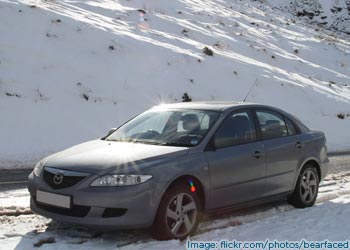 Now the season is well under way and we head into winter back here at home too, we’ve teamed up with the RAC, the UK’s leading suppliers of breakdown cover, to offer you some tips to make sure you’re safe and sound on the roads this winter.
Now the season is well under way and we head into winter back here at home too, we’ve teamed up with the RAC, the UK’s leading suppliers of breakdown cover, to offer you some tips to make sure you’re safe and sound on the roads this winter.
Winter Driving Tips from the RAC
1) Check Your Car Before You Set Off
The cold weather can cause all sorts of issues for your car but if you take the time to do some simple preliminary checks on these components, you might just save yourself a frozen fiasco:
- Car Battery – considering the RAC has more call outs for battery failure than anything else, we recommend checking your battery on a weekly basis during the winter months.
- Coolant – make sure your coolant is topped up and contains sufficient anti-freeze.
- Tyres – check the tread on your tyres (we recommend at least a depth of 3mm) as well as looking out for bulges or splits. Consider winter tyres or snow socks if you expect to drive in snow frequently.
- Screenwash – make sure you have enough screenwash and that the concentration is suitable for cold conditions.
- Wiper blades – if your blades are damaged they won’t be as efficient at clearing your windscreen. Be careful when freeing frozen blades from the windscreen as this can cause damage.
2) Keep a Winter Kit in your Car
Even if your car is set up perfectly, there’s still a chance you’ll run into trouble so it’s also recommended that you keep a kit in your car. Here are some key things it’s worth storing in your boot at all times, just in case:
- Ice scrapper and de-icer
- Torch and spare batteries – or a wind-up torch
- Warm clothes and blankets – for you and all passengers
- Boots with grip
- First aid kit
- Jump start cables
- Food and a warm drink in a thermos
- Shovel
- Reflective warning sign
- Road atlas
- Sunglasses – the glare off the snow can be dazzling
- In-car mobile phone charger
3) Tips for Driving on Winter Roads
Icy and snowy roads can be very dangerous, it’s important to adjust your driving style to compensate for the increased risk.
- Accelerate gently, use low revs and change up to a higher gear as quickly as possible. You may need to move off in second gear as this will help reduce wheel slip.
- If the road is covered by snow or ice you may need to leave as much as 10 times the normal recommended gap between you and the car in front.
- If you do encounter a skid, steer into it – for example, if the rear of the car is sliding to the right, steer to the right. Do not take your hands off the steering wheel or stamp your foot on the brakes.
- When driving on snow covered roads, be wary about driving in the tracks of other cars as the snow here may be icier than fresh snow.
- Controls such as the brakes, the steering, accelerator and even gear changing should be operated smoothly and slowly.
- Snow on the roads can cause glare from the low winter sun – remember to keep a pair of sunglasses with you.
- Keep your speed down and allow more time to stop and steer.
Taking these simple precautions could be the difference between arriving at your destination safely and having a nasty accident. However, even the most cautious and well prepared of drivers can’t avoid the odd mishap, so it is always advisable to have Breakdown Cover, just to be safe. No one wants to be stranded in the freezing cold.
We hope these tips help and you stay safe on the roads this winter!






